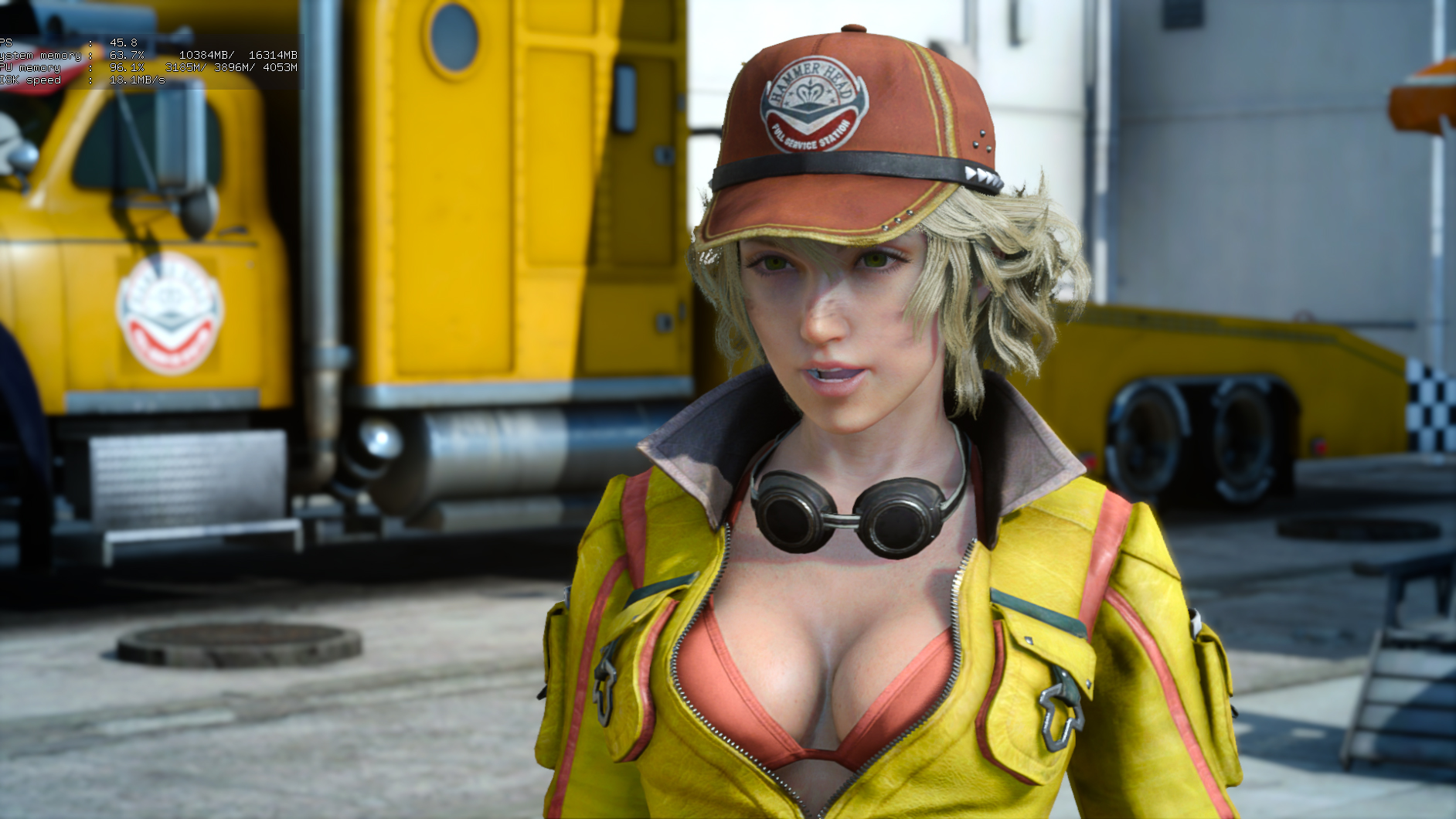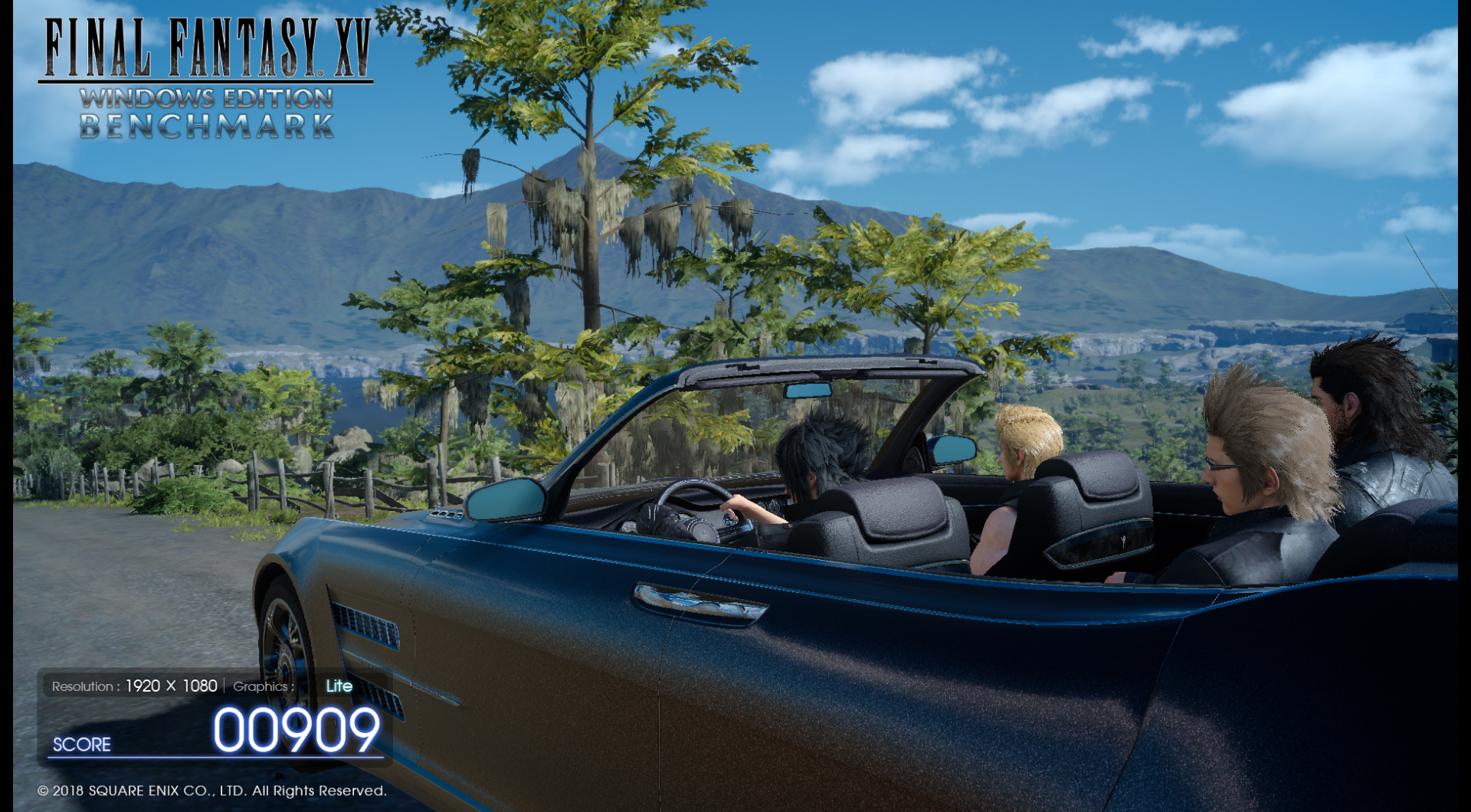Can your PC run Final Fantasy 15?
Benchmarking, graphics options, and our initial performance impressions.

Final Fantasy 15 Windows Edition isn't a barebones PC port. Square Enix took the time to add PC-exclusive features like Nvidia's HairWorks and Ansel 3D screenshots, and those aren't the only new graphics options in the PC version. Final Fantasy 15 sometimes struggled to output a consistent 30 fps on consoles, but it can now run at a gloriously smooth 120 frames per second. Of course, it's going to take a powerful PC to get the most out of Final Fantasy 15—Square Enix's recommended system requirements will only get you 30 fps at 1080p.
You may also need to clear out some space to fit FF15 on your PC: the Steam download weighs in at 85GB and includes a bundle of DLC released on consoles over the past year. There's also a free DLC "High-Resolution Pack" that includes 4K textures, and that takes up another 63 GB.
We'll have a review of Final Fantasy 15 Windows Edition early next week, and a full performance analysis by PC modder Durante. That guide will go in-depth on how Final Fantasy 15's many settings affect image quality and framerate, and we'll also be looking at how (and if) FF15's Denuvo DRM impacts performance.
In the meantime, here's what you need to know about Final Fantasy 15's system requirements, how its free benchmark tool compares to the game proper, and a quick overview of its settings. Remember to grab the latest drivers (Nvidia 391.01 and AMD Adrenalin Edition 18.3.1 as of this writing) for best performance.
Official system requirements
Minimum (720p @ 30fps)
Intel Core i5-2500(3.3GHz and above)/ AMD FX-6100 (3.3GHz and above)
8 GB RAM
GeForce GTX 760 / NVIDIA GeForce GTX 1050 / AMD Radeon R9 280
Recommended (1080p @ 30fps)
Keep up to date with the most important stories and the best deals, as picked by the PC Gamer team.
Intel Core i7-3770(3.4GHz and above)/ AMD FX-8350(4.0 GHz and above)
16GB RAM
GeForce GTX 1060 6 GB VRAM / Radeon RX 480
Based on our testing, we recommend at least a GTX 1070, though the officially recommended 1060 should be OK if you don't expect to consistently exceed 60 fps.
Rough benchmarks
Final Fantasy 15's free benchmark can help you gauge performance on your system. Running the 1080p, Standard Quality benchmark on my system (Core i7-6700K @ 4GHz, 16GB RAM, GTX 980) returned a 'high' score of 6574, which ranks below the average for my GPU. That could be for a variety of reasons, as this is my work PC and not a pristine benchmarking setup. The practical result was an average fps of 68 and a minimum of 50 (during moments of a big fight). On high settings, I received a 'fairly high' score of 4572 and averaged 45 fps, with a minimum of 28.
Looking at the average results, then, you can guess at what sort of experience you're going to get whether or not you download the benchmarking tool. If your GPU clocks around 6000 or higher, you can expect a mostly even 60fps, but if it drops down to the 4000s, expect higher than 30 but lower than 60.

If you're running an older machine, the 'Lite' setting doesn't look great, but it didn't totally dehydrate my eyes, and I managed 88 fps on average. Based on the published scores, a GTX 670 should deliver something playable (though definitely not above 60 fps) on the lowest settings at 1080p.
Of course, you can just download the benchmark and try it yourself if you like (I suggest pairing it with a benchmark recording tool such as Afterburner or FRAPS since it gives you a score rather than min-avg-max fps). My results in-game were about the same as my benchmark results, except with Nvidia tech enabled, detailed below.
Graphics settings and options
Final Fantasy 15 has a maximum framerate setting of 120, which is disappointing if you have a 144Hz monitor—though I'd challenge you to run it at 144 fps in the first place. On the same system I ran the benchmarks on, I was able to run FF15 at 1080p with the 'Highest' preset (the presets aren't named what they are in the benchmark, for some reason) with decent results, hitting around 45-65 fps. On the 'Average' preset, I also got what I expected from the benchmark, 55-75 fps, only dropping below 60 when there were a lot of visual effects on the screen during a fight.
It isn't ideal to drop below 60 at all, though recall that my machine benchmarked a bit lower than expected—you may fair slightly better. That is, unless you turn on all of the Nvidia-specific simulations, which lost me around 16 fps.

Those optional technologies are HairWorks (dynamic hair and fur), VXAO (Voxel Ambient Occlusion, which improves certain shadows), TurfEffects (grass simulation), and ShadowLibs ("advanced soft shadows").
If I had to choose, I'd keep VXAO and TurfEffects on, and turn off ShadowLibs (which makes everything too soft in my view) and HairWorks. You may have to do some testing to see what your system can or can't handle. TurfEffects makes the most obvious difference, as it's a total revamp of the grass (see above).
The other graphics settings are comprehensive enough, including lighting and shadow quality, anti-aliasing method (the faster FXAA or the higher-quality TAA, but strangely no option to turn it off altogether), and so on—mercifully with an option to turn off motion blur, which we always appreciate.

Outside of the graphics options, there are a ton of other useful settings. You can change keybindings (or choose from three controller schemes), turn off the HUD, adjust the camera, and change the voice and text languages (playing with Japanese voices and English subtitles, if you like).

We'll have more in-depth reports on FF15 and its performance soon. Our preliminary conclusion is that it's a comprehensive port which gives us lots of options, but a demanding game. If you absolutely must play everything at 1440p and a stable 60 fps or higher, try the benchmark or the demo before you buy.

Tyler grew up in Silicon Valley during the '80s and '90s, playing games like Zork and Arkanoid on early PCs. He was later captivated by Myst, SimCity, Civilization, Command & Conquer, all the shooters they call "boomer shooters" now, and PS1 classic Bushido Blade (that's right: he had Bleem!). Tyler joined PC Gamer in 2011, and today he's focused on the site's news coverage. His hobbies include amateur boxing and adding to his 1,200-plus hours in Rocket League.

